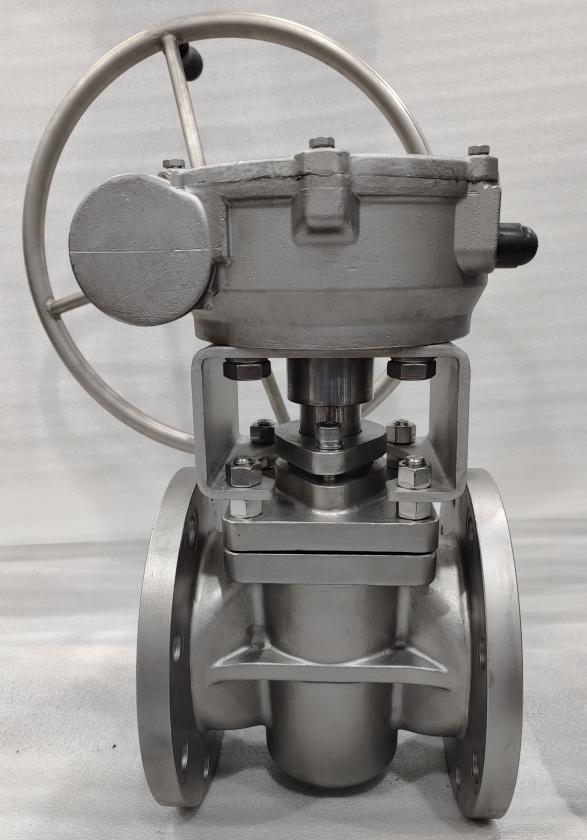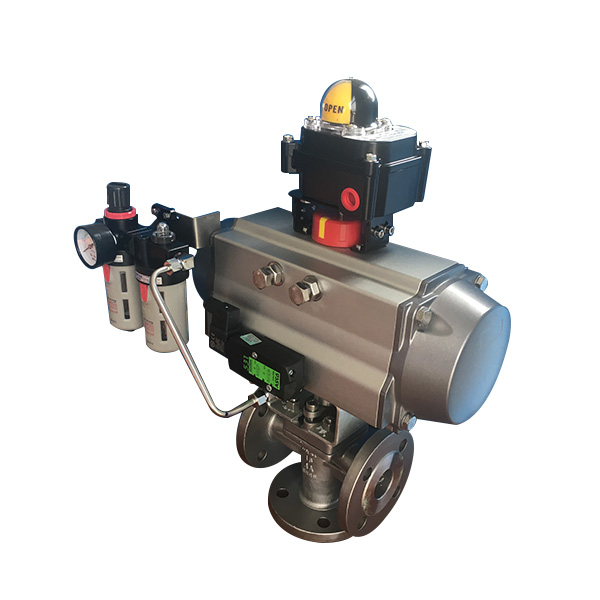The True Cost of a Plug Valve: An Analysis of Initial Price vs. Total Cost of Ownership

Ever wondered why some plug valves seem like a steal at first glance, but end up draining your budget over time? In the world of industrial flow control, picking the right valve isn’t just about the sticker price. It’s about digging deeper into what that valve will really cost you down the line. We’re talking initial outlay versus the total cost of ownership – a showdown that can make or break efficiency in plants dealing with everything from steam to slurries. Let’s break it down, step by step, so you can make smarter choices for your operations.
What Makes Up the Initial Price of a Plug Valve?
First off, the upfront cost. That’s what hits your wallet right away when you order a plug valve. It covers the basics: materials, manufacturing, and any custom tweaks. Think about it – a standard sleeved plug valve in stainless steel might run you a few hundred bucks for a smaller size, but scale up to an 18-inch model handling high pressure, and you’re looking at thousands.
Key factors play into this. Size matters a ton; valves from 1/2 inch to 18 inches vary wildly in price because bigger ones need more raw material and beefier construction. Then there’s the pressure rating – Class 150 to 600 – which demands thicker walls and stronger alloys to avoid blowouts. Materials like SS304, SS316, Hastelloy, or even exotic ones like Titanium jack up the cost if you’re dealing with corrosive fluids. Don’t forget end connections: flanged, butt-weld, threaded, or socket-weld each add their own premium based on how they fit your piping.
And hey, standards compliance isn’t cheap either. Valves built to API 599, API 6D, or ISO 14313 specs mean rigorous testing – from visual inspections on castings to pressure tests – all baked into that initial quote. In my experience chatting with plant managers, skimping here often leads to regrets, like when a cheap import fails certification and delays a whole project.
Breaking Down Total Cost of Ownership for Plug Valves
Now, shift gears to the bigger picture: total cost of ownership, or TCO. This isn’t just the buy-it-and-forget-it price. It’s everything from installation to the day you scrap it. Maintenance? That’s a big chunk. A plug valve in a mining slurry line might need quarterly checks to clear buildup, costing labor and parts. If it’s a lubricated type, add grease refills – small, but they add up over years.
Energy efficiency sneaks in too. A poorly designed valve can cause pressure drops, forcing pumps to work harder and spiking your electric bill. Imagine a chemical plant where a valve’s inefficiency adds 5-10% to monthly energy costs – that’s real money. Downtime is the killer, though. One failure in a critical line could halt production for hours, losing thousands per minute in some setups.
Lifespan ties it all together. A high-quality plug valve might last 10-15 years with proper care, versus a budget one’s 3-5 years. Factor in disposal or replacement costs, and TCO balloons for the cheap stuff. I’ve seen cases where operators thought they saved big upfront, only to replace valves twice as often, turning a “bargain” into a headache.
Initial Price vs. Total Cost of Ownership: The Real Comparison
Here’s where it gets interesting. Low initial price tempts everyone – who doesn’t love a deal? But stack it against TCO, and the math flips. Say you grab a basic plug valve for $500. Sounds great. But if it needs frequent repairs, say $200 a pop every six months, plus downtime losses of $1,000 each time, you’re at $3,000 extra in year one alone.
Contrast that with a premium valve at $1,200 initial. Better materials mean less corrosion, fewer fixes – maybe just annual maintenance at $100. Over five years, TCO might hover around $1,700 total, versus $5,000+ for the cheap one. That’s a 200% savings long-term.
To visualize, check this quick table:
|
Aspect |
Low Initial Price Valve |
High Initial Price Valve |
|
Upfront Cost |
$500 |
$1,200 |
|
Annual Maintenance |
$400 (frequent) |
$100 (minimal) |
|
Downtime Costs/Year |
$2,000 |
$500 |
|
Lifespan |
5 years |
15 years |
|
5-Year TCO |
$12,500 |
$3,500 |
Numbers like these come from industry reports I’ve pored over, like those from flow control associations. Sure, they’re estimates, but they mirror what I’ve heard from folks in pulp and paper mills, where abrasive media chews through subpar valves fast.
One caveat: not all high-price valves are winners. Sometimes you’re paying for bells and whistles you don’t need, like fancy coatings in a mild environment. That’s why analyzing your specific setup – flow rates, media type, operating temps – is key.
Key Factors That Drive Plug Valve Costs
Diving deeper, several elements sway both initial price and TCO. Let’s list ’em out:
- Material Selection: SS304 for general use keeps costs down, but switch to Hastelloy for acids, and prices double. It pays off in longevity, though – think reduced replacements in harsh chemical lines.
- Valve Type: Sleeved, lubricated, non-lubricated, or 3-way plugs each have pros. A 3-way might cost more upfront but simplify piping, cutting installation labor.
- Operating Conditions: High temps or pressures demand robust designs per ASME B16.10, bumping costs but slashing failure risks.
- Certifications and Testing: API 598 inspections ensure reliability. Skipping this? Risky, as one leak could cost far more than the test fee.
- Supplier Expertise: A vendor with stock and quick delivery avoids project delays. Plus, their advice on sizing can prevent over- or under-speccing.
Oh, and don’t overlook accessories. Actuators or positioners add to the bill but boost automation, trimming labor costs over time. It’s like buying a car – base model versus loaded; depends on your drive.
Real-World Examples: Plug Valves in Action
Picture this: a mining operation in Latin America handling slurry transport. They went cheap on plug valves initially, saving maybe 20% per unit. But within months, abrasion wore them out, causing leaks and shutdowns. Total hit? Over $50,000 in lost production and fixes in year one.
Flip side: a steam application in a power plant opts for higher-end non-lubricated plugs with Titanium elements. Initial spend was steeper, but zero failures in three years, with energy savings from tight seals. TCO dropped 30%, per their logs. These aren’t hypotheticals; they’re patterns from industries like water treatment or sugar processing, where reliable flow control keeps things humming.
And yeah, sometimes you get surprises. Like when a valve lasts longer than expected in a mild setup, making even a mid-range choice a TCO champ. It’s all about matching the valve to the job.
Why Choose Miwival as Your Plug Valve Supplier

When it comes to sourcing plug valves that balance cost and performance, Miwival stands out. Based in China with business all over the world, we’ve been delivering reliable solutions for over a decade, focusing on industries from mining to power. Our plug valves – available in sizes 1/2 to 18 inches, pressures up to Class 600, and materials like SS316 or Monel – meet API and ISO standards without compromise. With stock on hand and two-week delivery, we keep your projects moving. Plus, our team of engineers, like Managing Director Forrest Shaoke Meng with 20 years in valves, ensures every piece fits your needs perfectly.
Conclusion
Wrapping this up, the true cost of a plug valve goes way beyond the invoice. By weighing initial price against total cost of ownership, you avoid pitfalls and boost your bottom line. Smart choices here mean safer, more efficient operations – and that’s what counts in the end.
FAQs
What is the true cost of a plug valve beyond the initial price?
The true cost includes not just the buy price but ongoing expenses like maintenance, energy use, and potential downtime. For instance, a valve that lasts longer reduces replacements, keeping total cost of ownership low.
How does total cost of ownership affect my choice of plug valve?
TCO helps you see the long game. A cheaper valve might seem appealing, but if it fails often, repair and lost production costs skyrocket. Always calculate based on your specific industry needs, like in mining where durability is key.
Why might a higher initial price lead to lower total cost of ownership for plug valves?
Better materials and design mean fewer breakdowns and longer life. Think of it as investing upfront to save big later – data from flow control pros shows premiums can cut TCO by 30-50% over five years.
Can analyzing initial price vs. total cost of ownership save money in industrial applications?
Absolutely. In setups like chemical processing, picking a robust plug valve prevents leaks and inefficiencies, trimming energy bills and avoiding costly halts. It’s about smart spending, not just cutting corners.
What factors should I consider when evaluating the true cost of a plug valve?
Look at materials, pressure ratings, maintenance needs, and supplier support. For example, exotic alloys hike the initial price but slash corrosion-related fixes, balancing out in TCO.





